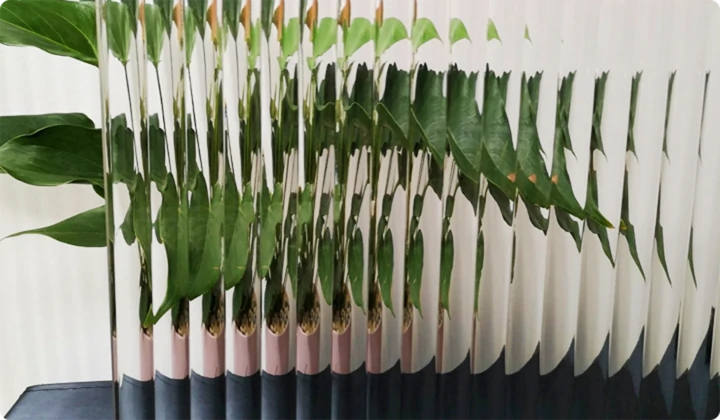Tempered Laminated Glass Specification
Tempered laminated glass is a crucial component in modern architecture and design, known for its combination of safety, durability, and aesthetic appeal. This type of glass serves various applications, from windows and facades to shower doors and glass floors. Understanding its specifications is essential for architects, builders, and designers to ensure proper selection and application.
What is Tempered Laminated Glass?
Tempered laminated glass is formed by combining two or more panes of glass with a layer of interlayer material, typically polyvinyl butyral (PVB) or ethylene-vinyl acetate (EVA). The glass is first tempered, meaning it is heated to a high temperature and then rapidly cooled. This process increases its strength and thermal resistance, making it up to five times stronger than untreated glass. Once tempered, the glass panes are laminated together using the interlayer, providing additional safety features and sound insulation.
Specifications of Tempered Laminated Glass
1. Thickness The thickness of tempered laminated glass can vary based on application requirements, typically ranging from 6mm to 25mm. The chosen thickness affects both strength and weight considerations.
2. Safety Standards Tempered laminated glass must comply with various safety standards. In the US, it is often tested according to ASTM C 1172, which outlines the performance of laminated glass. It should also meet local building codes for impact resistance and safety glazing.
tempered laminated glass specification
3. Mechanical Properties The mechanical properties of tempered laminated glass are vital for its performance. It must withstand significant stress and impact, providing resilience against breakage. The interlayer enhances the glass's ability to hold together when shattered, reducing the risk of injury.
4. Optical Clarity High-performance tempered laminated glass is designed to offer excellent optical clarity, ensuring natural light transmits effectively. The interlayer material should be clear and free from imperfections to maintain aesthetic quality.
5. UV Protection One of the advantages of laminated glass is its ability to filter out harmful ultraviolet (UV) rays. This protection helps preserve furniture and interior finishes from fading, contributing to better energy efficiency within a building.
6. Sound Insulation The laminated interlayer provides excellent sound-dampening properties, making tempered laminated glass an ideal choice for urban environments where noise reduction is desired. It can significantly lessen the transmission of sound, creating a more comfortable interior atmosphere.
7. Customization Options Manufacturers often offer a range of customization options for tempered laminated glass. This can include tinted glass, various colors of the interlayer, and different finishes, allowing architects to tailor solutions to specific design needs.
Conclusion
In conclusion, tempered laminated glass is a versatile and high-performance building material that meets a range of specifications aimed at enhancing safety, comfort, and aesthetic value. By understanding its attributes and specifications, designers and builders can make informed choices that will contribute to the longevity and functionality of their projects. As the demands for sustainable and functional architecture continue to grow, tempered laminated glass will undoubtedly play a pivotal role in shaping our built environment.
 Afrikaans
Afrikaans  Albanian
Albanian  Amharic
Amharic  Arabic
Arabic  Armenian
Armenian  Azerbaijani
Azerbaijani  Basque
Basque  Belarusian
Belarusian  Bengali
Bengali  Bosnian
Bosnian  Bulgarian
Bulgarian  Catalan
Catalan  Cebuano
Cebuano  Corsican
Corsican  Croatian
Croatian  Czech
Czech  Danish
Danish  Dutch
Dutch  English
English  Esperanto
Esperanto  Estonian
Estonian  Finnish
Finnish  French
French  Frisian
Frisian  Galician
Galician  Georgian
Georgian  German
German  Greek
Greek  Gujarati
Gujarati  Haitian Creole
Haitian Creole  hausa
hausa  hawaiian
hawaiian  Hebrew
Hebrew  Hindi
Hindi  Miao
Miao  Hungarian
Hungarian  Icelandic
Icelandic  igbo
igbo  Indonesian
Indonesian  irish
irish  Italian
Italian  Japanese
Japanese  Javanese
Javanese  Kannada
Kannada  kazakh
kazakh  Khmer
Khmer  Rwandese
Rwandese  Korean
Korean  Kurdish
Kurdish  Kyrgyz
Kyrgyz  Lao
Lao  Latin
Latin  Latvian
Latvian  Lithuanian
Lithuanian  Luxembourgish
Luxembourgish  Macedonian
Macedonian  Malgashi
Malgashi  Malay
Malay  Malayalam
Malayalam  Maltese
Maltese  Maori
Maori  Marathi
Marathi  Mongolian
Mongolian  Myanmar
Myanmar  Nepali
Nepali  Norwegian
Norwegian  Norwegian
Norwegian  Occitan
Occitan  Pashto
Pashto  Persian
Persian  Polish
Polish  Portuguese
Portuguese  Punjabi
Punjabi  Romanian
Romanian  Russian
Russian  Samoan
Samoan  Scottish Gaelic
Scottish Gaelic  Serbian
Serbian  Sesotho
Sesotho  Shona
Shona  Sindhi
Sindhi  Sinhala
Sinhala  Slovak
Slovak  Slovenian
Slovenian  Somali
Somali  Spanish
Spanish  Sundanese
Sundanese  Swahili
Swahili  Swedish
Swedish  Tagalog
Tagalog  Tajik
Tajik  Tamil
Tamil  Tatar
Tatar  Telugu
Telugu  Thai
Thai  Turkish
Turkish  Turkmen
Turkmen  Ukrainian
Ukrainian  Urdu
Urdu  Uighur
Uighur  Uzbek
Uzbek  Vietnamese
Vietnamese  Welsh
Welsh  Bantu
Bantu  Yiddish
Yiddish  Yoruba
Yoruba  Zulu
Zulu 

